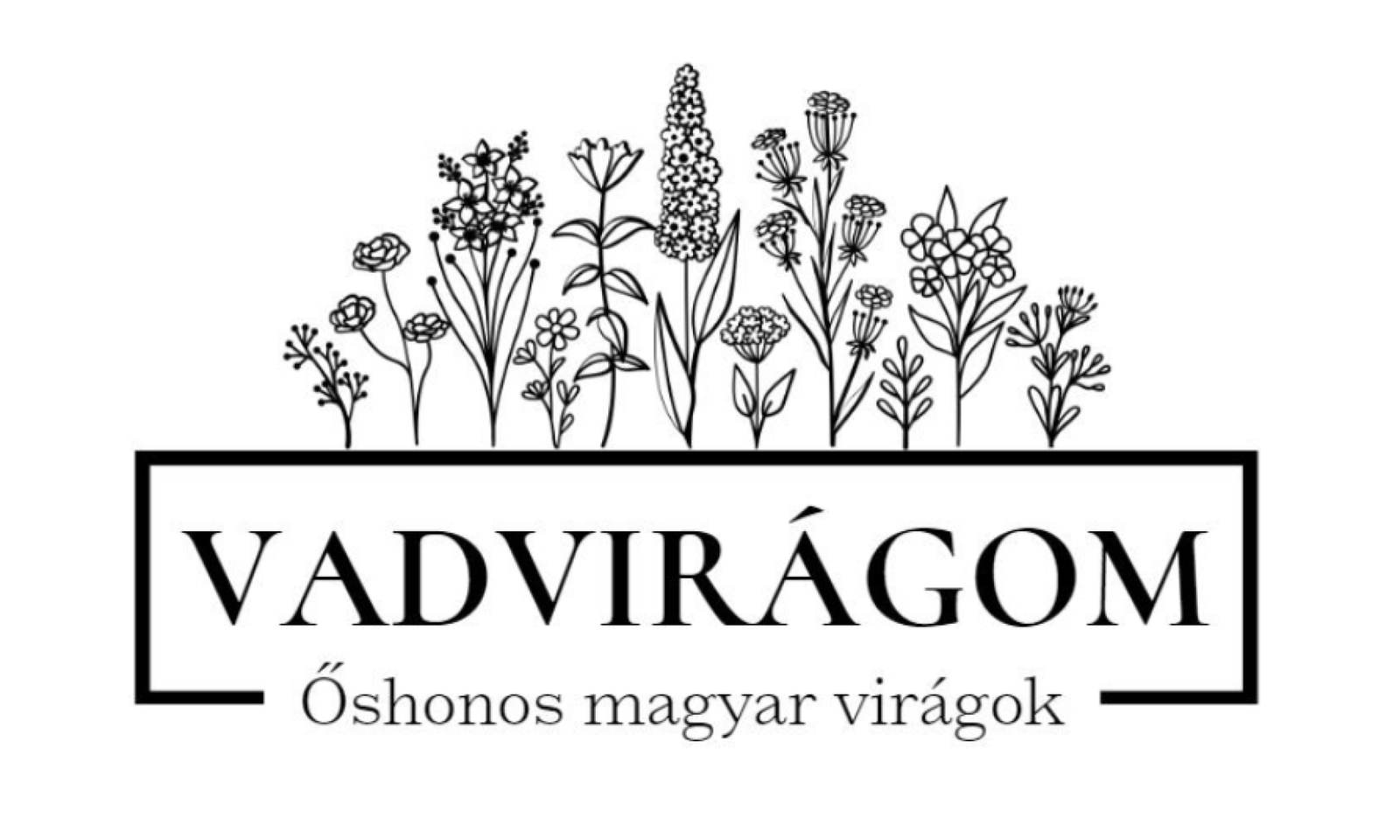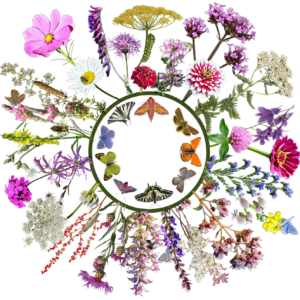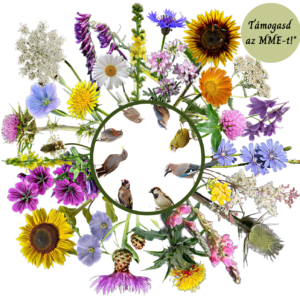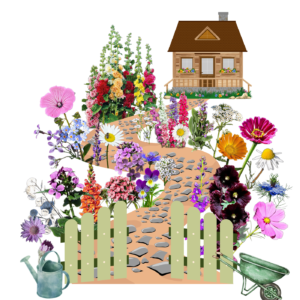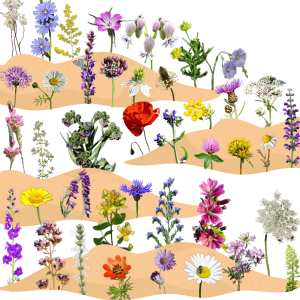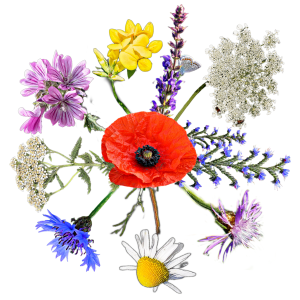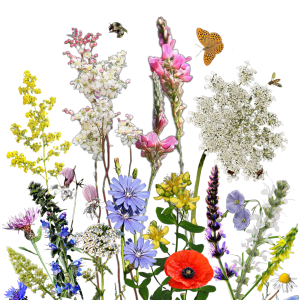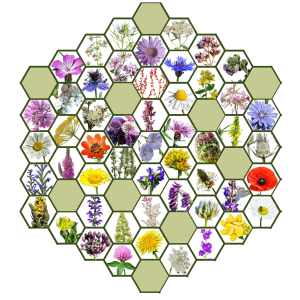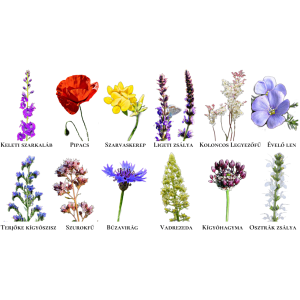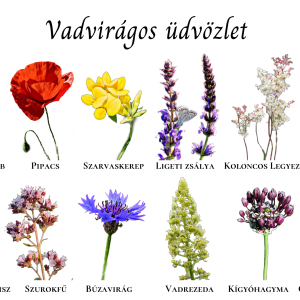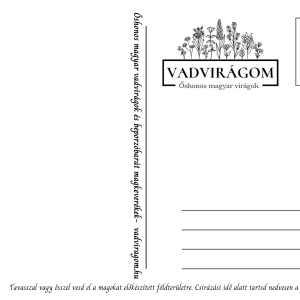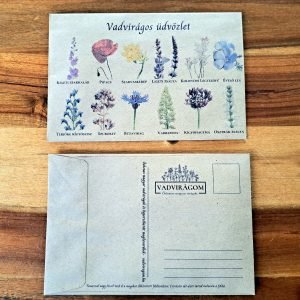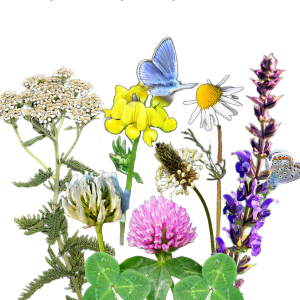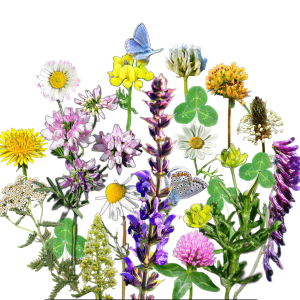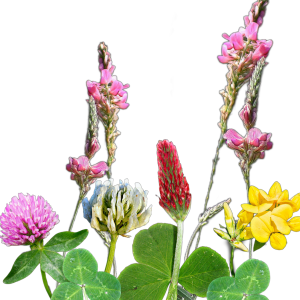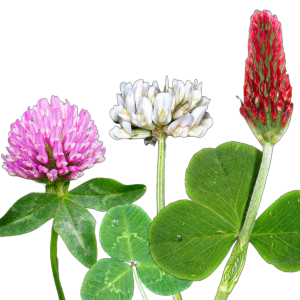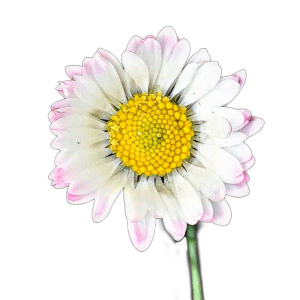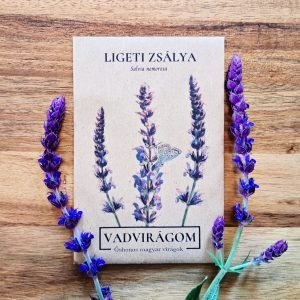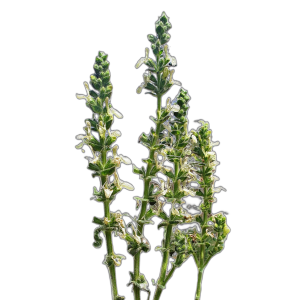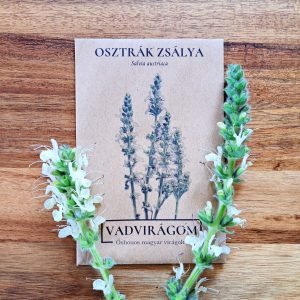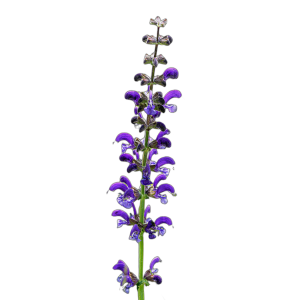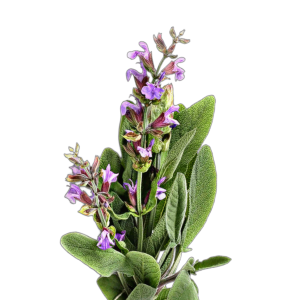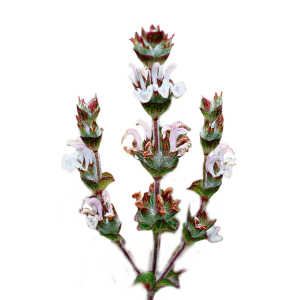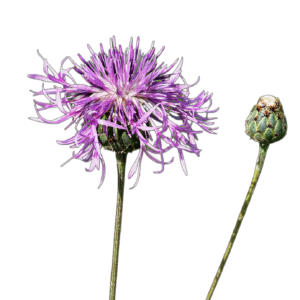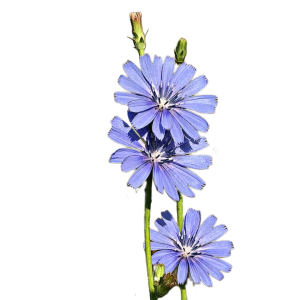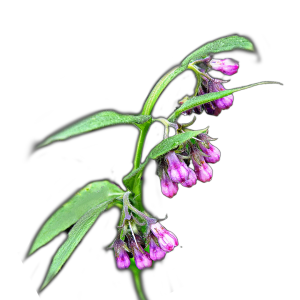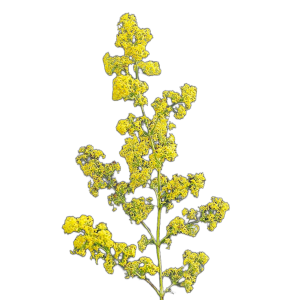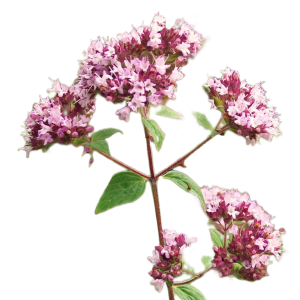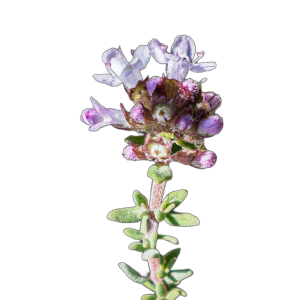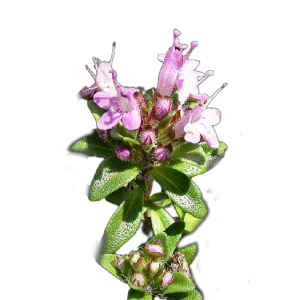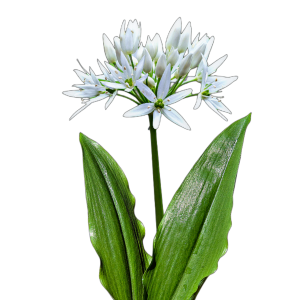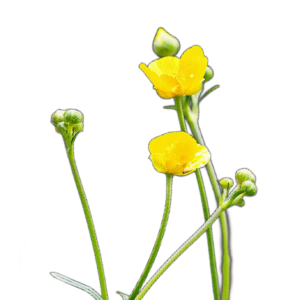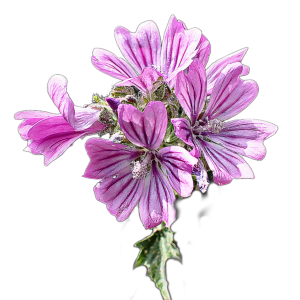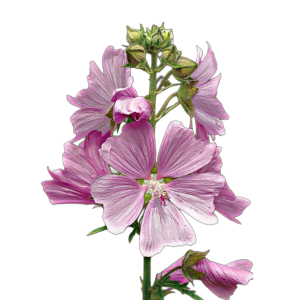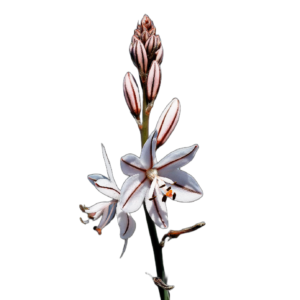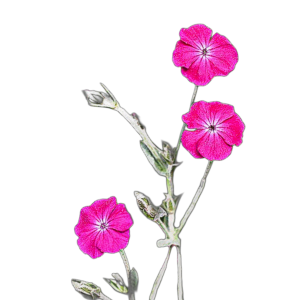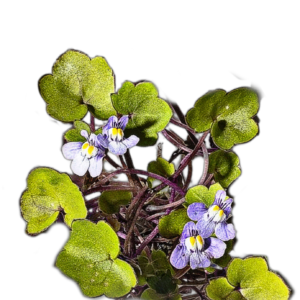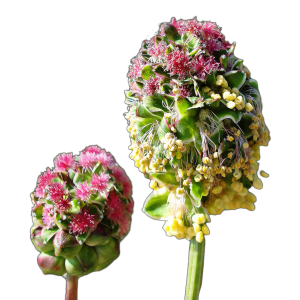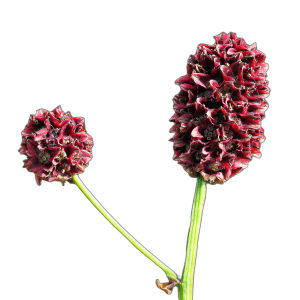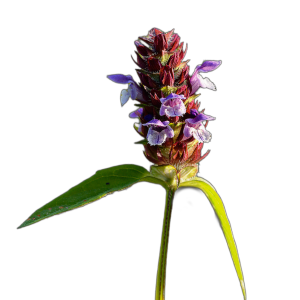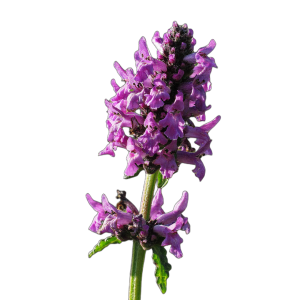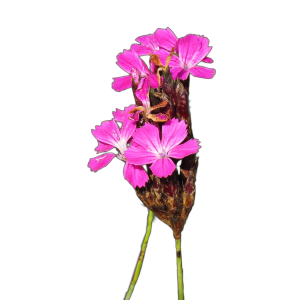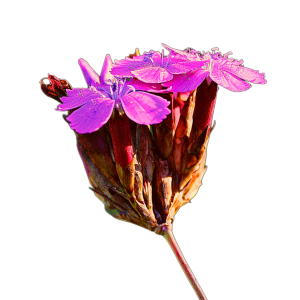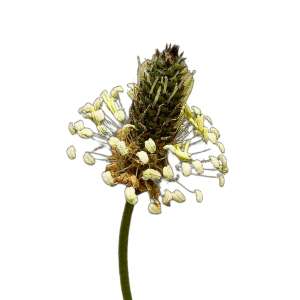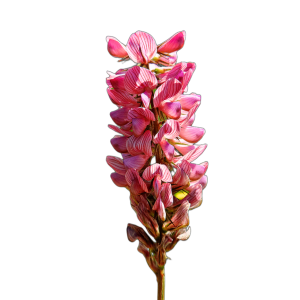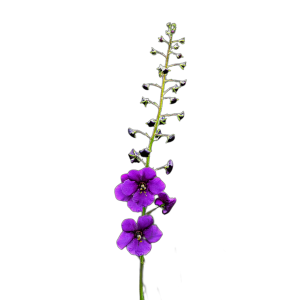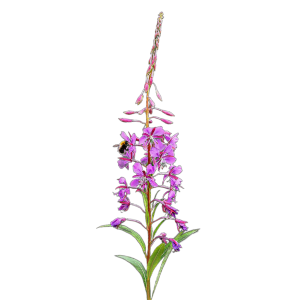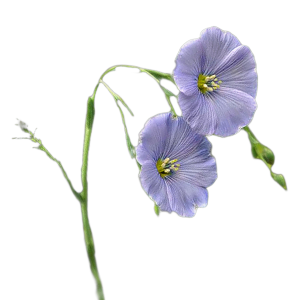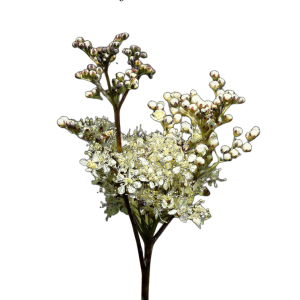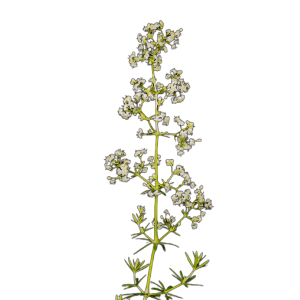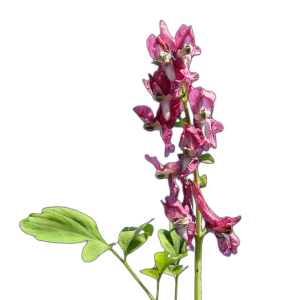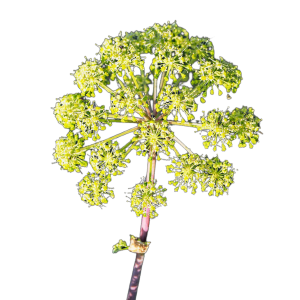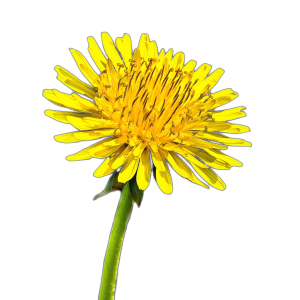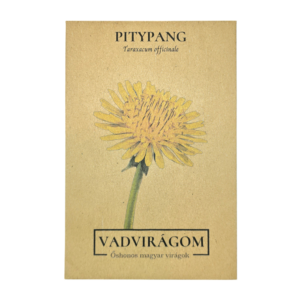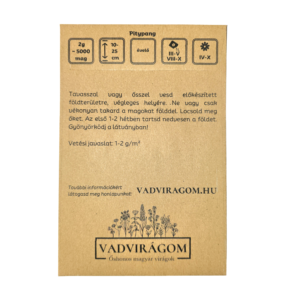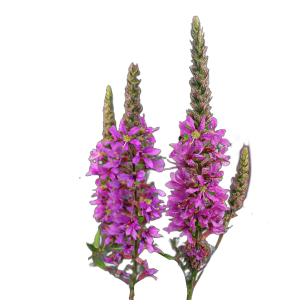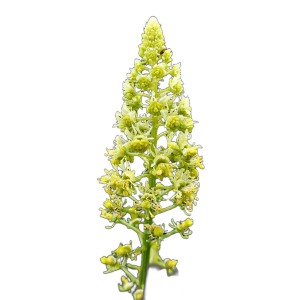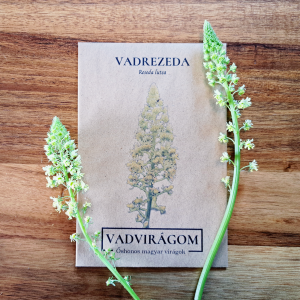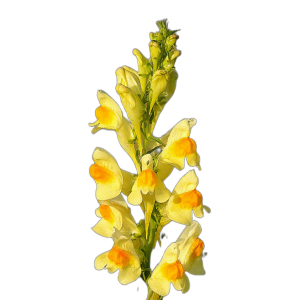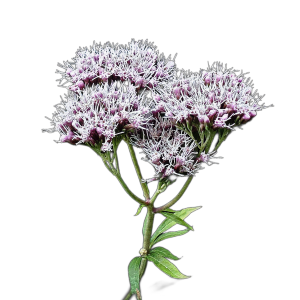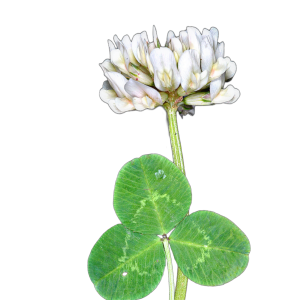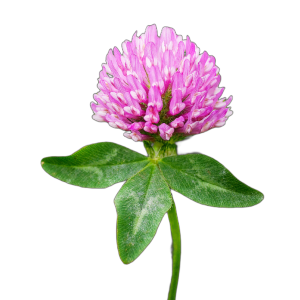-
-
Select options
There are several variations of this product. The variants can be selected on the product page
- Add to wishlistAdd to wishlist
- butterflies' favourite, butterfly attractant seed mix, seed mix
MAPMAKER 2.0 - caterpillar, hemp and moth seed mix (NEW!)
- 950 Ft - 8.000 Ft
- Butterfly Lure 2.0 is a seed mix for caterpillars, butterflies and sedges, the result of 1 year of research, which has resulted in a seed mix of the best nectar-producing and nutritious plant species. The majority of moths and sedges are very selective when they are caterpillars and have only a few or only 1 or 1 species of food plant: this is the plant on which the moth lays its eggs and the leaves of this plant are eaten by the caterpillars.
Add to wishlistAdd to wishlist -
Select options
There are several variations of this product. The variants can be selected on the product page
-
-
Select options
There are several variations of this product. The variants can be selected on the product page
- Add to wishlistAdd to wishlist
- bird attractant, seed mix
BIRD FOOD - seed mix for winter feeding of birds (prickly)
- 2.500 Ft - 13.000 Ft
- The idea for the Bird Lure seed mix came from the tengelicidae, as I watched tengelicidae come to a stray sunflower left outside a window for weeks to feast. Many species of birds, including blue tits, coal tits, cherry warblers and those with beaks suited to such things like this like to peck out the half-ripe/mature seeds from the open, seed-ripened flowers. In addition, many of our bird species are insect prey, which feed on pollen and...
Add to wishlistAdd to wishlist -
Select options
There are several variations of this product. The variants can be selected on the product page
-
-
Select options
There are several variations of this product. The variants can be selected on the product page
- Add to wishlistAdd to wishlist
- bird attractant, seed mix
BIRD FEEDER 2.0 - seed mix for winter feeding of birds (petting)
- 2.500 Ft - 13.000 Ft
- The idea for the Bird Lure seed mix came from the tengelicidae, as I watched tengelicidae come to a stray sunflower left outside a window for weeks to feast. Many species of birds, including blue tits, coal tits, cherry warblers and those with beaks suited to such things like this like to peck out the half-ripe/mature seeds from the open, seed-ripened flowers. In addition, many of our bird species are insect prey, which feed on pollen and...
Add to wishlistAdd to wishlist -
Select options
There are several variations of this product. The variants can be selected on the product page
-
-
Select options
There are several variations of this product. The variants can be selected on the product page
- Add to wishlistAdd to wishlist
- seed mix, nostalgic seed mix, cut flower
MAMA GARDEN - nostalgic seed mix (NEW!)
- 950 Ft - 5.000 Ft
- The Mama's Garden nostalgic seed mix is a true love project, reaching back to the roots where many of our passion for flowers began: our Mama's garden. With this seed mix I would like to thank and pay tribute to our grandmothers, for letting us learn from them about gardening practices, for introducing us to those nostalgic, now partly forgotten flowers and for laying the foundations for our passion for gardening. So I have chosen species that for me are typical of the old...
Add to wishlistAdd to wishlist -
Select options
There are several variations of this product. The variants can be selected on the product page
-
-
Select options
There are several variations of this product. The variants can be selected on the product page
- Add to wishlistAdd to wishlist
- butterflies' favourite, seed mix
BOKRÉTA - cut flower seed mix (NEW!)
- 950 Ft - 4.000 Ft
- The Bokréta cut flower seed mix is designed for flower and bouquet lovers. It's also a perfect gift for women's day or mother's day :) For the price of half a bunch, we will have a lot of bunches of flowers, not only in the year of sowing, but also in the years to come. The Bokréta seed mix is a mixture of 25 species of annual, biennial and perennial flowers, with a predominance of...
Add to wishlistAdd to wishlist -
Select options
There are several variations of this product. The variants can be selected on the product page
-
-
Select options
There are several variations of this product. The variants can be selected on the product page
- Add to wishlistAdd to wishlist
- 40 native Hungarian wild flowers for sandy soil, seed mix
BUCKALAKO seed mix
- 950 Ft - 16.000 Ft
- By popular demand, the wildflower meadow or beehive seed mix for sandy soil is ready! Buckalako seed mix contains 40 native Hungarian species that are drought tolerant and thrive in sandy soils. During the germination period it is important to keep the area moist: in autumn and spring for autumn sowing and in spring for spring sowing. Once the seedlings have germinated, they require no or very minimal watering (of course, months of drought...
Add to wishlistAdd to wishlist -
Select options
There are several variations of this product. The variants can be selected on the product page
-
-
Select options
There are several variations of this product. The variants can be selected on the product page
- Add to wishlistAdd to wishlist
- 10 native Hungarian wildflowers, seed mix
BEE 2.0 - Bee-feeding seed mix
- 900 Ft - 13.000 Ft
- Make your garden wild with this annual herbaceous seed mix of 10 native Hungarian species and welcome beneficial pollinators to your garden! This mix is a taster into the world of bee-keepers: we have selected 10 species that are pollinator favourites and will make beautiful ornaments to your garden with their long flowering. It includes annual, biennial and perennial flowers. Features: life cycle: annual, biennial, perennial flowering time: may-october size:...
Add to wishlistAdd to wishlist -
Select options
There are several variations of this product. The variants can be selected on the product page
-
-
Select options
There are several variations of this product. The variants can be selected on the product page
- Add to wishlistAdd to wishlist
- 20 native Hungarian wild flowers, seed mix
POLLENANYO 2.0 - beekeeping seed mix
- 900 Ft - 14.500 Ft
- One of the smaller members of the 10-60 species bee-feeding mix range is the pollinator-friendly Pollen Mother seed mix. Go wild with this seed mix and welcome beneficial pollinators to your garden! The more species a mix contains, the more native pollinator species it supports, Pollenanyó pollinator-friendly seed mix contains the best 20 native Hungarian wildflowers for you and your pollinators. And they are beautiful too :) Features:...
Add to wishlistAdd to wishlist -
Select options
There are several variations of this product. The variants can be selected on the product page
-
-
Select options
There are several variations of this product. The variants can be selected on the product page
- Add to wishlistAdd to wishlist
- 30 native Hungarian wild flowers, seed mix
BEPORZÓNA 3.0 - beekeeping seed mix
- 900 Ft - 16.000 Ft
- One of the middle members of the 10-60 species blend series, Beporzóna 3.0 is a seed blend of 30 indigenous Hungarian beekeepers. Wild your garden with this seed mix and welcome beneficial pollinators to your garden! The more species a mix contains, the more native pollinator species it supports. This mix has been developed with the above in mind, and we have also tried to select species that many specialist...
Add to wishlistAdd to wishlist -
Select options
There are several variations of this product. The variants can be selected on the product page
-
-
Select options
There are several variations of this product. The variants can be selected on the product page
- Add to wishlistAdd to wishlist
- 40 Hungarian and European wild flowers, seed mix
NEK-TÁR 3.0 - beekeeping seed mix
- 950 Ft - 17.500 Ft
- Make your garden wild with this annual-biennial-annual-evergreen bee-feeding seed mix of 40 species of Hungarian and European wildflowers and welcome beneficial pollinators to your garden! In addition to the Beporzone of 30 native wildflower species, this mix also includes some great pollinator-attracting Mediterranean wildflowers such as borage, marigold, garden ladybird and anise. It also contains several annual European wildflower species,...
Add to wishlistAdd to wishlist -
Select options
There are several variations of this product. The variants can be selected on the product page
-
-
Select options
There are several variations of this product. The variants can be selected on the product page
- Add to wishlistAdd to wishlist
- 50 species of native wild flowers, seed mix
BEES NO? - beekeeping seed mix
- 950 Ft - 19.000 Ft
- One of the larger members of the 10-60 species beekeeping mixture series, Méh ne? is a native Hungarian beekeeping seed mixture of 50 species (the largest native Hungarian member of the series). Wild your garden with this seed mix and welcome beneficial pollinators to your garden! The more species a mix contains, the more native pollinator species it supports. This blend has been developed with the above in mind,...
Add to wishlistAdd to wishlist -
Select options
There are several variations of this product. The variants can be selected on the product page
-
-
Select options
There are several variations of this product. The variants can be selected on the product page
- Add to wishlistAdd to wishlist
- 60 native European wild flowers, seed mix
ZÜMMÖGDE - beekeeping seed mix
- 950 Ft - 20.500 Ft
- The largest member of the 10-60 species beekeeping seed mixture series, Zümmögde, is a native Hungarian beekeeping seed mixture of 60 species (the largest member of the series). Wild your garden with this seed mix and welcome beneficial pollinators to your garden! The more species a mix contains, the more native pollinator species it supports. This mix has been developed with the above in mind, and we have tried to include...
Add to wishlistAdd to wishlist -
Select options
There are several variations of this product. The variants can be selected on the product page
-
-
Add to basket
- Add to wishlistAdd to wishlist
- seed mix of 12 native Hungarian species, gift, postcard, seed mix
WILDFLOWER GREETINGS POSTCARD
- 950 Ft
- Want to send a unique wildflower greeting and help more people rediscover Hungarian wildflowers and support native pollinators? In this postcard bag, we've hidden a 1 gram mix of our most wonderful native Hungarian wildflower blends that is sure to delight the recipient. Write the postcard, send it in the post and wait for the appreciative feedback.
Add to wishlistAdd to wishlist -
Add to basket
-
-
Select options
There are several variations of this product. The variants can be selected on the product page
- Add to wishlistAdd to wishlist
- can be sown in grass, seed mix, beekeeping, native grassland, native
FRUITFUL FURRY seed mix
- 2.500 Ft - 7.500 Ft
- Want a beautiful, colourful and thriving lawn? With a mixture of 7 native wildflowers, the Flowering Native Lawn is guaranteed to be a hit with pollinators: the catkin, sage and hornwort are very popular with butterflies, while the white testicle provides food for short-tongued pollinators such as the house bee and the red testicle for long-tongued bees, including bumblebees. Like all butterfly...
Add to wishlistAdd to wishlist -
Select options
There are several variations of this product. The variants can be selected on the product page
-
-
Select options
There are several variations of this product. The variants can be selected on the product page
- Add to wishlistAdd to wishlist
- can be sown in grass, seed mix, beekeeping, native grassland, native
FERTILIZED FERTILIZED EXTRA seed mix
- 3.500 Ft - 10.000 Ft
- Want a beautiful, colourful and thriving lawn? After the highly successful Flowering Ancestral Grass with 7 native wildflower species, its bigger brother, the Flowering Ancestral Grass Extra Seed Mix with 15 species of native Hungarian seeds, is now available. This is a guaranteed success with pollinators: catkin, sage, spotted knapweed, rabbit's foot, hairy vetch and hornwort are very popular with butterflies,...
Add to wishlistAdd to wishlist -
Select options
There are several variations of this product. The variants can be selected on the product page
-
-
Select options
There are several variations of this product. The variants can be selected on the product page
- Add to wishlistAdd to wishlist
- can be sown between grass, seed mix, green manure
NITRO seed mix
- 1.750 Ft
- Want to improve soil quality naturally while benefiting pollinators? That's exactly what our 5-species green manure seed mix is for! Each species enriches the soil with nitrogen, increasing future yields. Forget fertilizers and use an ecologically sustainable solution while supporting pollinators. Characteristics: life cycle: annual, perennial flowering time: may-october size: 10-60 cm soil: dry, average growing conditions: sunny pollination factor: 9/10...
Add to wishlistAdd to wishlist -
Select options
There are several variations of this product. The variants can be selected on the product page
-
-
Select options
There are several variations of this product. The variants can be selected on the product page
- Add to wishlistAdd to wishlist
- may be sown in grass, seed mix, permanent grassland
TRIUMVIRÁGUS seed mix
- 1.750 Ft - 2.500 Ft
- Want a beautiful, colourful and thriving lawn? With this mix, success is guaranteed, even for pollinators: white clover feeds short-tongued pollinators such as house bees, while red clover and purple clover feed long-tongued pollinators such as bumblebees. Like all butterfly plants, testes fix nitrogen from the air and enrich the soil with it. This...
Add to wishlistAdd to wishlist -
Select options
There are several variations of this product. The variants can be selected on the product page
-
-
Add to basket
- Add to wishlistAdd to wishlist
- perennial, herb, bee-keeper, native
Daisy (Bellis perennis) 0,25g, ~1800 seeds
- 875 Ft
- I think no one needs to be introduced to my favourite creator of flower lawns. The wild form of the daisy (Bellis perennis) is our native wildflower, which does very well in grass and lawns. It is best sown with grass or in seed mixtures when mowing, but do not sow it amongst your existing grass: it is best sown as seedlings, which will germinate very well over time when planted amongst the grass. Its attractiveness as a pollinator is incredible...
Add to wishlistAdd to wishlist -
Add to basket
-
-
Add to basket
- Add to wishlistAdd to wishlist
- 10/10 pollinator, perennial, butterfly favourite, bee-feeder, native
Ligeti sage (Salvia nemorosa) 1g, ~925 seeds
- 875 Ft
- Lime sage (Salvia nemorosa) is one of our most beautiful wild flowers, and its cultivars can be found in many garden shops. No garden should be without it, it is a great favourite with pollinators. The various buttercups are particularly fond of it (see photo), but it is also a great favourite of bumblebees. Lime sage is less well known for its medicinal properties, but like medicinal sage it can be used for its antiseptic properties, or as a herb (although it is also a...
Add to wishlistAdd to wishlist -
Add to basket
-
-
Add to basket
- Add to wishlistAdd to wishlist
- perennial, herb, bee-keeper, native
Austrian Sage (Salvia austriaca) 1g, ~500 seeds
- 875 Ft
- The Austrian sage (Salvia austriaca) is a beautiful native wildflower, unknown to many, that really should be in our gardens. Like the Hungarian sage, it is white in colour, but less branched and taller than the Lignet sage. Like all sages, it is one of our most attractive wild flowers and a great favourite with pollinators, especially bumblebees. Many of our wild flowers were first described by a Franco-Austrian botanist N.J.Jacquin,...
Add to wishlistAdd to wishlist -
Add to basket
-
-
Add to basket
- Add to wishlistAdd to wishlist
- 10/10 pollinator, perennial, butterfly favourite, bee-feeder, native
Sage (Salvia pratensis) 1g, ~500 seeds
- 875 Ft
- The field sage (Salvia pratensis) is one of our most beautiful wild flowers, just like the sage of the Liga. The field sage is slightly larger in stature and has larger flowers than the sage, but has a similar purple colour. You may also see horticultural varieties from time to time. Sage is known for its interesting pollination mechanism, whereby the bee crawling in for nectar moves the lower stamen, which moves the upper stamen, which then spreads the nectar on the pollinator's back...
Add to wishlistAdd to wishlist -
Add to basket
-
-
Add to basket
- Add to wishlistAdd to wishlist
- 10/10 pollinator, perennial, butterfly favourite, bee-feeder, native
Medical Sage (Salvia officinalis) 2g, ~240 seeds
- 875 Ft
- Medicinal sage (Salvia officinalis) is a medicinal and aromatic plant originally from the Mediterranean, long known and cultivated. It has been used for a very long time for many ailments ranging from sore throats to enteritis. It is also made into a tea, which is not recommended for breastfeeding or pregnant women. It can also be used as a spice, especially for duck, turkey and game meat, and is also found in Provance spice blends. Along with lavender, it has recently been the focus of research...
Add to wishlistAdd to wishlist -
Add to basket
-
-
Add to basket
- Add to wishlistAdd to wishlist
- perennial, bee-keeper, native
Hungarian sage (Salvia aethiopis) 1g, ~425 seeds
- 875 Ft
- The Hungarian sage (Salvia aethiopis) is one of our rare sage species, which is white in colour like the Austrian sage, but shorter and more branched. Its leaves are whitish and mottled. Interestingly, it is called African Sage in English, in reference to its wide distribution, as it is also found in North Africa. Contrary to its name, it is not indigenous to our country, having probably been brought here from southern Europe during the Turkish occupation. It blooms for months and, like other sage species,...
Add to wishlistAdd to wishlist -
Add to basket
-
-
Add to basket
- Add to wishlistAdd to wishlist
- 10/10 pollinator, perennial, bee-feeder, native
Common yarrow (Achillea millefolium) 1g, ~7000 seeds
- 875 Ft
- Common yarrow (Achillea millefolium) is well known and is one of our best pollinator wildflowers. Its long flowering period makes it particularly valuable. Evergreen, it is also an excellent choice for lawns. It is a medicinal herb and can even be made into tea. Properties: other names: medicinal yarrow, shagbark, yarrow, mouse-tail, thousandleaf, medicinal thousandleaf, turkey-grass Latin name: Achillea millefolium family: Asteraceae life: perennial flowering time: June-October size: 40-60 cm (flowers lower in mown lawns) soil: dry, average growing area: sunny other: herb...
Add to wishlistAdd to wishlist -
Add to basket
-
-
Add to basket
- Add to wishlistAdd to wishlist
- 10/10 pollinator, perennial, butterfly favourite, bee-feeder, native
Iron-veined Imola (Centaurea scabiosa) 0,25g, ~40 seeds
- 875 Ft
- Centaurea scabiosa is a native Hungarian wildflower. According to a British study, the iron-veined imola is one of the TOP3 pollinator-attracting wildflowers: it is frequented by many pollinators, especially butterflies, and is a great nectar producer. Its very long flowering, lasting all summer and into late autumn, makes it particularly important for pollinators. The imola family includes the cornflower, meadow imola, mountain imola, Hungarian imola...
Add to wishlistAdd to wishlist -
Add to basket
-
-
Add to basket
- Add to wishlistAdd to wishlist
- perennial, bee-keeper, native
Chickweed (Cichorium intybus) 1g, ~660 seeds
- 875 Ft
- A well-known wildflower is the field marigold (Cichorium intybus), which attracts pollinators with its pollen. Its flowering in autumn is an important time for pollinators. It was also used to make chicory coffee, but nowadays the cultivated variety is used for this purpose. Its pollen is white in colour. Properties: other names: thistle, wild chicory, endive, yucca, katanchory, coffee-cake, blue flower, sunflower, sunflower-flowering grass Latin name: Chicorium intybus family: Asteraceae life: perennial flowering time: July-October size:80-100 cm...
Add to wishlistAdd to wishlist -
Add to basket
-
-
Add to basket
- Add to wishlistAdd to wishlist
- perennial, herb, bee-keeper, native
Black Coneflower (Symphytum officinale) 0,5g, ~50 seeds
- 875 Ft
- The black needlewort (Symphytum officinale) is a very well-known native herb, mostly used externally as an ointment for broken bones, sprains, bruises, sprains and similar conditions. The root and leaves are collected and used to make ointments, tinctures and poultices. Its use internally is not recommended because of its alcohol content of pyrrolizidine, which is harmful to the liver. Like other borage species, such as medical atracil, teriy...
Add to wishlistAdd to wishlist -
Add to basket
-
- Out of StockRead more
- Add to wishlistAdd to wishlist
- 10/10 pollinator, perennial, butterfly favourite, bee-feeder, native
Milk thistle (Galium verum) 1g, ~3200 seeds
- 875 Ft
- The milkweed (Galium verum) is a native Hungarian wildflower that attracts many pollinators and is also a food plant for many butterfly species (including many of our protected butterflies, the sedge). It was used to make cheese, hence its name ('gala' means milk in Greek). It can also be used as a yellow dye, and in the past it was used not only to rennet milk but also to colour cheese, for example Gloucester cheese has a strong yellowish-orange colour...
Add to wishlistAdd to wishlist -
-
-
Add to basket
- Add to wishlistAdd to wishlist
- perennial, herb, bee-keeper, native
Daisy (Leucanthemum vulgare) 1g, ~3000 seeds
- 875 Ft
- Most of us know the meadow daisy (Leucanthemum vulgare) or wild daisy from the like-it-or-not game of petal-peeling. The wild variety is perennial and winter-hardy, if left undisturbed it will also sow its seeds beautifully and can form larger colonies. Its long bloom makes it a valuable flower for pollinators but it is also beautiful. Properties.
Add to wishlistAdd to wishlist -
Add to basket
-
- Out of StockRead more
- Add to wishlistAdd to wishlist
- 10/10 pollinating factor, perennial, herb, medicinal plant, butterfly favourite, bee-feeder, native
Oregano (Origanum vulgare) 1g, ~12000 seeds
- 875 Ft
- Oregano (Origanum vulgare) is a wild Hungarian variety of the spice known as pitch grass, which is most commonly known as pitch grass or wild marjoram. It has a less intense flavour than the Mediterranean variety used in Bolognese sauce, but it can be used as a spice and herb. It's also one of our most attractive wild flowers for pollinators, visited by a cavalcade of solitary bees, bumblebees and butterflies for nectar. Properties.
Add to wishlistAdd to wishlist -
-
-
Add to basket
- Add to wishlistAdd to wishlist
- also for window box, edible flower, perennial, herb, herbaceous plant, beekeeper, native, tea
Garden Thyme (Thymus vulgaris) 1g, ~4700 seeds
- 875 Ft
- Garden thyme (Thymus vulgaris) is an herb of Mediterranean origin, related to the narrow-leaved thyme that is also native to our country. Its long flowering period (June to September) also makes it a very good pollinator and it is visibly adored and frequented by bees and butterflies. As a herb, garden thyme is the most commonly used, mostly used to flavour meats, but it also goes very well with game. It is also used as a medicinal herb, expectorant, antispasmodic...
Add to wishlistAdd to wishlist -
Add to basket
-
- Out of StockRead more
- Add to wishlistAdd to wishlist
- also for window box, edible flower, perennial, herb, herbaceous plant, beekeeper, native, tea
Thymus serpyllum 0,25g, ~1950 seeds
- 875 Ft
- Narrow-leaved thyme or field thyme (Thymus serpyllum) is a native Hungarian herb that can be found in many places in nature. Its long flowering period (from May to September) makes it a very good pollinator and it is visibly adored and frequently visited by bees and butterflies. It is also increasingly being used abroad as a flowering, care-free weed. Its short stature, beautiful flowers and drought tolerance make it a really good substitute for lawns....
Add to wishlistAdd to wishlist -
-
-
Add to basket
- Add to wishlistAdd to wishlist
- also for window box, edible flower, perennial, herb, medicinal plant, bee-keeper, native
Allium ursinum 1g, ~130 seeds
- 875 Ft
- Allium ursinum (Allium ursinum) is one of our best-known native herbs and is justifiably popular. Like snake garlic, it is also known as wild garlic. A gift from the shady forests of spring, its mildly garlicky leaves are delicious crushed with walnuts and oil as a pesto or mixed into scones. When foraging in the woods, care should be taken not to confuse it with the poisonous lily of the valley, which has similar leaves to the...
Add to wishlistAdd to wishlist -
Add to basket
-
-
Add to basket
- Add to wishlistAdd to wishlist
- perennial, bee-keeper, native
Ranunculus acris 1g, ~780 seeds
- 875 Ft
- The meadow buttercup (Ranunculus acris) is a native Hungarian wildflower, which, yellowing from May, almost covers the wetter primeval grasslands. Its yellow flowers often stand out in pastures, because, like other buttercup species, it is also poisonous and is not eaten by grazing animals. While seed buttercup is an annual flower, meadow buttercup is a perennial. It spreads by clinging and can form quite large colonies. It has become resistant to herbicides, so...
Add to wishlistAdd to wishlist -
Add to basket
-
-
Add to basket
- Add to wishlistAdd to wishlist
- perennial, bee-keeper, native
Wood mallow (Malva sylvestris) 1g, ~230 seeds
- 875 Ft
- The wood mallow (Malva sylvestris) is our perennial wildflower, whose pollen is much loved by many bee species. Sometimes you can see bees drowning in the pollen of mallow :) A delicacy known as pap cheese. In ancient times, its leaves were used to make stew. The whole plant is edible and medicinal, and the flowers can be made into tea. Applied externally, the leaves are excellent for wasp and scorpion stings and skin irritations. Several cultivated varieties are annuals, their pollinator attraction properties...
Add to wishlistAdd to wishlist -
Add to basket
-
-
Add to basket
- Add to wishlistAdd to wishlist
- perennial, bee-keeper, native
Musk mallow (Malva moschata) 0,5g, ~250 seeds
- 875 Ft
- The musk mallow (Malva moschata) is a native Hungarian wildflower, whose pollen, like that of the forest mallow, is loved by many bee species. It gets its name from its distinctive scent, a perfume-like musky smell, hence the name. If you don't know what musk smells like, you should definitely try it :) Growing bushy, it can be a perfect alternative to the often deadly alien pink/splendid grove sedge that is often a threat to ducktail sedge. It blooms all summer, from June to September,...
Add to wishlistAdd to wishlist -
Add to basket
-
-
Add to basket
- Add to wishlistAdd to wishlist
- perennial, herb, bee-keeper, native
Medical soap grass (Saponaria officinalis) 1g, ~750 seeds
- 875 Ft
- Medical soapwort (Saponaria officinalis) is a native Hungarian wildflower. As its name suggests, it can also be used for washing hands. If not as a soap, then as a herb or pollinator-attracting ornamental plant, it can have a great place in your garden. Properties.
Add to wishlistAdd to wishlist -
Add to basket
-
-
Add to basket
- Add to wishlistAdd to wishlist
- perennial, herb, bee-keeper, native
St. John's wort (Hypericum perforatum) 1g, ~10500 seeds
- 875 Ft
- St. John's wort (Hypericum perforatum) is a native Hungarian wildflower. Perhaps the most curious information about St. John's wort is that it was used in the Middle Ages as an exorcism for its antidepressant, sedative and mood-enhancing properties. Its use as an exorcism is no longer recommended, but it is used both externally and internally as a medicinal herb. Pollinators (especially bumblebees), however, are delighted by its orange pollen. Properties: other names: dandelion, common dandelion, dandelion with holes in the leaves,...
Add to wishlistAdd to wishlist -
Add to basket
-
-
Add to basket
- Add to wishlistAdd to wishlist
- perennial, butterfly, bee-feeder, native
Asphodel (Asphodelos fistulosus) 0,1g, ~30 seeds
- 875 Ft
- Asphodelos (Asphodelos fistulosus) is a European plant of Mediterranean origin, often planted in ornamental gardens in many countries. In the Americas and Australia it has escaped as a garden escapee and is considered invasive. It is not so widespread here. The native, indigenous relative of asphodel is the white asphodel (Asphodelos albus), which is protected and also known as genus A. It is also known as 'onionweed' because of its onion-like leaves. According to Greek mythology...
Add to wishlistAdd to wishlist -
Add to basket
-
-
Add to basket
- Add to wishlistAdd to wishlist
- perennial, butterfly, bee-feeder, native
Velvet thyme (Lychnis coronaria) 0,1g, ~190 seeds
- 875 Ft
- The velvet cuckoo-grass (Lychnis coronaria) is a native Hungarian wildflower that is protected. Fortunately, this native flower is now widely planted in the garden, with its beautiful dark pink flowers and silvery leaves. Its wintergreen (or wintersilver? :) ) leaves do not retract in winter. It is a short-lived perennial, but it sows its seeds well and spreads well. An excellent choice for rock gardens and mixed flower beds. It is easy to...
Add to wishlistAdd to wishlist -
Add to basket
-
-
Add to basket
- Add to wishlistAdd to wishlist
- perennial
Carpathian bellflower (Campanula carpatica) 0,25g, ~3625 seeds
- 875 Ft
- The Carpathian bellflower (Campanula carpatica) is a native species of the Carpathians, but is no longer native to present-day Hungary. Fortunately, this low perennial bellflower is often planted in gardens. Carpathian bluebells are easy to grow and are a charming plant for lower perennial gardens and rock gardens, flowering all summer and even into autumn. It looks beautiful when at the peak of flowering the plant is covered in purple, bell-shaped flowers.
Add to wishlistAdd to wishlist -
Add to basket
-
- Out of StockRead more
- Add to wishlistAdd to wishlist
- perennial
Stonecrop (Cymbalaria muralis) 0,025g, ~140 seeds
- 875 Ft
- Congratulations! If you're reading this, it means you won't be thinking of an exotic bird species when you hear the name stonechat :) The stonecrop (Cymbalaria muralis) is a native European wildflower that can grow on stones, in small cracks and just about anywhere. It is a true little Mediterranean survivor, and of course it will thank you if you give it real soil :) It spreads by creeping tendrils, so it's worth keeping it under control...
Add to wishlistAdd to wishlist -
-
- Out of StockRead more
- Add to wishlistAdd to wishlist
- edible flower, perennial, butterfly, bee-feeder, native
Ryegrass (Lychnis flos-cuculi) 0,25g, ~1500 seeds
- 875 Ft
- The meadow cuckoo flower (Lychnis flos-cuculi) is a very graceful and unique-looking, beautiful wild flower. Its nectar makes it very popular with pollinators, especially butterflies. Its beautiful flowers are edible and can be a beautiful decoration on the plate. Latin name: Lychnis flos-cuculi Family: Caryophyllaceae Life cycle: perennial Flowering time: May - July Size: 30-50 cm Soil: average, moist Growing area: sunny, shady Seeds origin:...
Add to wishlistAdd to wishlist -
-
-
Add to basket
- Add to wishlistAdd to wishlist
- 10/10 pollinator factor, perennial, butterfly favourite, beekeeper, nitrogen bomb, native grassland, native
Hornwort (Lotus corniculatus) 10g, ~8300 seeds
- 875 Ft
- seeds origin: Austria 1 package contains 10 g, about 8300 seeds. For sowing suggestions and more details, scroll down.
Add to wishlistAdd to wishlist -
Add to basket
-
-
Add to basket
- Add to wishlistAdd to wishlist
- perennial, herb, bee-keeper, native
Medicinal cat's-root (Valeriana officinalis) 0,5g, ~800 seeds
- 875 Ft
- Medicinal cat's-root (Valeriana officinalis) is one of our oldest herbs, and is still cultivated today for its active ingredients. It is much loved by pollinators for both its pollen and nectar. It is a very ornamental, beautiful flower whose fragrance has been compared to marshmallows. In the Middle Ages it was used to make perfumes. Properties: other names: cat's-tail, valerian, valerian, valerian, valerian root, nardus Latin name: Valeriana officinalis family: Caprifoliaceae/Valerianaceae life-span: perennial...
Add to wishlistAdd to wishlist -
Add to basket
-
-
Add to basket
- Add to wishlistAdd to wishlist
- edible, perennial, herb, herbaceous, butterfly, bee-feeder, native
Sanguisorba minor 1g, ~125 seeds
- 875 Ft
- Sanguisorba minor (Sanguisorba minor), or little bloodroot, is a perennial, native wildflower. According to legend, it got its name from the fact that the Hun prince Csaba used it to heal the wounds of his soldiers after a battle because of its haemostatic properties. It is also an edible herb: its leaves have a nutty, cucumber taste and are excellent in salads. Like its relative, the autumn bloodroot, it is a food plant for many of our butterflies, for this reason alone...
Add to wishlistAdd to wishlist -
Add to basket
-
-
Add to basket
- Add to wishlistAdd to wishlist
- edible, perennial, herb, herbaceous, butterfly, bee-feeder, native
Autumn bloodroot (Sanguisorba officinalis) 0,1g, ~50 seeds
- 875 Ft
- Autumn bloodroot (Sanguisorba officinalis) or medical bloodroot is a perennial, native wildflower. It has been used as a medicinal herb since ancient times, mainly for its haemostatic properties. Its aqueous or alcoholic extract with gillyweed has proven antimicrobial properties. Its ecological importance is mainly associated with the protected Natura 2000 species bloodroot, for which it is the sole and exclusive food plant. The bloodroot buttercup leaves its eggs after laying them on the flowers of the autumn bloodroot. The caterpillars...
Add to wishlistAdd to wishlist -
Add to basket
-
-
Add to basket
- Add to wishlistAdd to wishlist
- perennial, herb, beekeeper, native grassland, native
Common lizard grass (Prunella vulgaris) 0,1g, ~125 seeds
- 875 Ft
- Prunella vulgaris is a native Hungarian wildflower, which is most often found in grassland communities. It flowers from May until the end of summer, and once established it spreads with its tendrils. It prefers sunny or semi-shady places and a more humid environment. It has long been cultivated for its astringent and wound-healing properties, but its leaves can also be made into tea. It has also been used in the past to treat laryngitis, hence the name. A...
Add to wishlistAdd to wishlist -
Add to basket
-
-
Add to basket
- Add to wishlistAdd to wishlist
- perennial, herb, butterfly, bee-feeder, native
Medical pure grass (Stachys officinalis/Betonica officinalis) 0,1g, ~65 seeds
- 875 Ft
- A beautiful native wildflower is the medical buttercup (Stachys officinalis/Betonica officinalis), which is worth keeping in your garden for its beauty alone. Its nectar makes it a very attractive flower for bumblebees and butterflies, along with other species of the orphan family. As its name suggests, it has also been widely used as a medicinal plant: as a tea for coughs, it has also been found to be effective against rheumatism and epilepsy. Properties.
Add to wishlistAdd to wishlist -
Add to basket
-
-
Add to basket
- Add to wishlistAdd to wishlist
- perennial, butterfly, bee-feeder, native
Bareroot (Dianthus carthusianorum) 0,1g, ~80 seeds
- 875 Ft
- Barnyard grass (Dianthus carthusianorum) is a beautiful native wildflower that has a great place in our gardens. Butterflies, like other carnations such as meadow cuckoo-grass, are particularly keen for its nectar. It gets its Latin name from the Carthusian monks who were fond of planting it in the gardens of their monasteries. This is probably the origin of the Hungarian name for barnyardgrass. The Hungarian carnation (Dianthus pontederae) and the field carnation are very similar species...
Add to wishlistAdd to wishlist -
Add to basket
-
-
Add to basket
- Add to wishlistAdd to wishlist
- perennial, butterfly, bee-feeder, native
Hungarian Carnation (Dianthus pontederae) 0,1g, ~200 seeds
- 875 Ft
- The Hungarian carnation (Dianthus pontederae) is a true Carpathian Basin endemic, native species, as its name suggests. It is found only here in the world, but interestingly it is very little known, even though it is a beautiful ornamental plant. Its flowers are a little similar to those of barnyard grass. Butterflies, like other carnations such as meadow cuckoo-grass, are particularly keen for its nectar. The Hungarian carnation prefers dry places, is relatively undemanding, and...
Add to wishlistAdd to wishlist -
Add to basket
-
-
Add to basket
- Add to wishlistAdd to wishlist
- perennial, herb, bee-keeper, native
Lanceolate Plantain (Plantago lanceolata) 2g, ~1000 seeds
- 875 Ft
- Who doesn't know the syrupy, cough-relieving form of spearwort (Plantago lanceolata) from childhood, a less popular cough syrup as a child? Its medicinal properties are undoubted, but its long flowering period also makes it attractive to pollinators, who mainly collect pollen. It can also be used externally to treat wounds and stings. It is an important and common species in lawns. Properties: other names: lamb's tongue, lizard's tongue, netting grass, snake's tongue, goose's tongue, devil's rib, plantain, plantain...
Add to wishlistAdd to wishlist -
Add to basket
-
-
Add to basket
- Add to wishlistAdd to wishlist
- 10/10 pollinator factor, perennial, butterfly favourite, bee-feeder, nitrogen bomb
Baltacim (Onobrychis viciifolia) 15g, ~750 mag
- 875 Ft
- The buttercup (Onobrychis viciifolia) is a fantastically versatile and useful plant that should be in our gardens for many reasons. It's a good fodder plant, mainly known for this, but it also produces lots of nectar and is a magnet for bees and butterflies. It is a food plant for many butterfly species, along with its cousin, the sand moth. It can also be a useful part of the garden because of its nitrogen-fixing...
Add to wishlistAdd to wishlist -
Add to basket
-
-
Add to basket
- Add to wishlistAdd to wishlist
- perennial, bee-keeper, native
Purple oxtail (Verbascum phoenicum) 0,05g, ~335 seeds
- 875 Ft
- The purple oxtail (Verbascum phoenicum) is a very special wild flower. Unlike the other ox-tail orchids, it is not yellow but purple and has a much more graceful appearance. And that's not the only difference: while the other oxeye daisies are biennials, the purple oxeye daisy is a perennial. They get their name (a surprising fact) from their yellow cousins' resemblance to the tail of an ox. The flowers start to open from below, only 3-4 at a time...
Add to wishlistAdd to wishlist -
Add to basket
-
- Out of StockRead more
- Add to wishlistAdd to wishlist
- perennial, herb, butterfly favourite, beekeeper
Earth deréce (Epilobium angustifolium) 0,05g, ~1100 seeds
- 875 Ft
- The woodland buttercup (Epilobium angustifolium) is a beautiful native wildflower, somewhat similar to the meadow willow (Lythrum salicaria). Its large pink flowers are real pollinator magnets and it is also a food plant for many butterflies, including many species of hemp (gall hemp, grape hemp, striped hemp, dwarf hemp, striped hemp, bat hemp, red hemp). It is called fireweed because it is a pioneer plant that often takes over an area after a fire. Lord of the Rings...
Add to wishlistAdd to wishlist -
-
-
Add to basket
- Add to wishlistAdd to wishlist
- perennial, bee-keeper, native
Perennial flax (Linum perenne) 2g, ~1320 seeds
- 875 Ft
- The perennial flax (Linum perenne) is a very charming native wildflower with a pale blue colour that makes a beautiful ornament to the garden. Its flowers open early in the morning, but they continue to open and decorate for weeks and months. Its stems have long been used to weave rope, a property discovered 30,000 years ago. It is fairly drought tolerant, preferring a sunny position but tolerating partial shade. It really comes into its own when planted in large groups. The...
Add to wishlistAdd to wishlist -
Add to basket
-
-
Add to basket
- Add to wishlistAdd to wishlist
- perennial, butterfly favourite, native
White meconium (Melandrium album) 1g, ~800 seeds
- 875 Ft
- The white meconium (Melandrium album/Silene latifolia) is a very elegant native perennial carnation. Like soapwort, it contains saponin in its roots, which is why it was used for washing in the past. It only starts to smell at night because it is pollinated by moths and sedges. More attention should be paid to nocturnal pollinators and their food sources, as they play as important a role in pollination and the ecosystem as their daytime counterparts. The white bee flower is a beautiful,...
Add to wishlistAdd to wishlist -
Add to basket
-
-
Add to basket
- Add to wishlistAdd to wishlist
- perennial, butterfly, bee-feeder, native
Spotted fanwort (Filipendula vulgaris) 1g, ~750 seeds
- 875 Ft
- Colonial fanwort (Filipendula vulgaris) is another of our beautiful native wildflowers that is so inexplicable why more people don't plant it in their gardens. It's also known as fairy grass, and when you look at it, you don't need to explain why. In the wild, its fragrant flowers appear from May onwards and pollinators can't resist them. Compared to its relative, meadow fanwort, it can live in drier places and is much shorter. Properties: Latin name: Filipendula...
Add to wishlistAdd to wishlist -
Add to basket
-
-
Add to basket
- Add to wishlistAdd to wishlist
- perennial, herb, butterfly, bee-feeder, native
Knapweed (Filipendula ulmaria) 1g, ~1800 seeds
- 875 Ft
- Meadow fanwort (Filipendula ulmaria) is a taller, wetter relative of the colonial fanwort, which is also native to our area. The Germanic and Celtic peoples used its flowers (and roots) to flavour their mead, and like elderberries, it can also be used to make syrups. It contains analgesic substances (e.g. salicylic acid) and was the source of the first aspirin. Its sweet, almond-like scent wafts through the meadows when it blooms. Properties: other names:...
Add to wishlistAdd to wishlist -
Add to basket
-
-
Add to basket
- Add to wishlistAdd to wishlist
- edible, perennial, herb, butterfly, bee-feeder, native
Common Galium (Galium mollugo) 1g, ~2100 seeds
- 875 Ft
- The common galweed (Galium mollugo) is a fantastically fragrant native wildflower, often consumed as a tea for its positive effects on the thyroid gland. Along with other species (such as milkweed), it is an important food plant for many of our butterflies, including 8 species of sedge, including the duck-tailed sedge. Properties: Latin name: Galium mollugo family: Rubiaceae life: perennial flowering time:May-August size: 20-30 cm soil: average growing area: sunny, semi-shade other:...
Add to wishlistAdd to wishlist -
Add to basket
-
-
Add to basket
- Add to wishlistAdd to wishlist
- perennial, butterfly, bee-feeder, native
Lysimachia vulgaris 0,1g, ~390 seeds
- 875 Ft
- The common lyssum (Lysimachia vulgaris) is an unfairly unknown Hungarian wildflower. Like the meadow willow (Lythrum salicaria), it prefers wetter habitats, and in English it is called purple loosestrife and yellow loosestrife. Their name is derived from the translation of the Greek name Lysimachus, which ancient records say was named after a general of Alexander the Great. It is a popular ornamental plant in America, where it is considered exotic and is often planted. Here, however,...
Add to wishlistAdd to wishlist -
Add to basket
-
-
Add to basket
- Add to wishlistAdd to wishlist
- perennial, may be sown in grass, herb, beekeeper, nitrogen bomb, native grassland, native
Rabbit's foot (Anthyllis vulneraria) 2g, ~660 seeds
- 875 Ft
- Rabbit's foot (Anthyllis vulneraria) is a well-known herb that has been used to treat wounds externally for its astringent properties. It is also a butterfly plant, so it fixes nitrogen from the air. It can also work when sown in grass: it can be a super component of pollinator-friendly lawns. Properties: other names: wonder clover, clover, cat's claw, rabbit's clover, wound clover, sapuka Latin name: Anthyllis vulneraria family: Fabaceae life: perennial flowering time: may-july size: 15-20 cm soil: average, dry...
Add to wishlistAdd to wishlist -
Add to basket
-
-
Add to basket
- Add to wishlistAdd to wishlist
- perennial, herb, butterfly, bee-feeder, native
Corydalis cava/bulbosa 0,5g, ~80 seeds
- 875 Ft
- The Corydalis cava is a small Hungarian wildflower native to Hungary, which can cover the forest undergrowth in early spring when it blooms. It is a very important wildflower for pollinators: both because of its early flowering, when not many nectar sources are available, and because one of our butterfly species, the Apollo butterfly, is exclusively fed on Celtic butterflies (besides the pseudocathedral Celtic butterfly, we also find its cousin, the fingered Celtic butterfly). It likes...
Add to wishlistAdd to wishlist -
Add to basket
-
-
Add to basket
- Add to wishlistAdd to wishlist
- herb, herbaceous plant, biennial, bee-feeder
Medicinal angelica (Angelica archangelica) 0,5g, ~110 seeds
- 875 Ft
- Medicinal angelica (Angelica archangelica) is a European wildflower, closely related to the native forest angelica (Angelica sylvestris). It is often used as a medicinal plant and herb, and is cultivated in many places. The root is used as a herb, but the plant should not be allowed to go to seed, the stems should be cut and the roots picked up in the autumn. As a spice, it can be used to flavour salads, sauces and stews. It is used as a...
Add to wishlistAdd to wishlist -
Add to basket
-
-
Add to basket
- Add to wishlistAdd to wishlist
- edible flower, perennial, may be sown in grass, medicinal plant, beekeeper, native grassland, native
Dandelion (Taraxacum officinale) 2g, ~5000 seeds
- 875 Ft
- I don't think anyone needs to be introduced to our best-known herb, which is time for better marketing than ever before. The dandelion (Taraxacum officinale) is one of our most useful flowers for bees: its spring opening is an important time for bee feeding and it also flowers for a long time, even into late autumn. All parts of the flower can be used and eaten: the flower can be used to make syrup, the leaf can be used to make salad, and the root can be used to make chicory.
Add to wishlistAdd to wishlist -
Add to basket
-
-
Add to basket
- Add to wishlistAdd to wishlist
- perennial, butterfly, bee-feeder, native
Ryegrass (Lythrum salicaria) 0,1g, ~2400 seeds
- 875 Ft
- Meadow willow (Lythrum salicaria) is one of our most attractive native Hungarian wildflowers, somewhat similar to the woodland willow (Epilobium angustifolium), but much better known. It prefers wetter habitats, and is often found in marshy areas, bordering water banks. Its long, pink flowers are a great favourite with pollinators. The meadow willow is relatively tall at 100-180 cm, while its smaller relative, the willow willow (Lythrum virgatum) is much shorter, only...
Add to wishlistAdd to wishlist -
Add to basket
-
-
Add to basket
- Add to wishlistAdd to wishlist
- perennial, can be sown in grass, beekeeping, nitrogen bomb, native grassland, native, green manure
Coronella varia (Securigera/Coronilla varia) 5g, ~1500 seeds
- 875 Ft
- The variegated coronilla (Securigera/Coronilla varia) is a useful nitrogen-fixing native perennial and a valuable bee-feeder due to its long flowering period. It is slow-growing at first, then spreads with creeping stems. Mildly toxic, do not put in bean soup :) Properties: other names: coronet Latin name: Securigera varia / Coronaria varia family: Fabaceae life: perennial flowering time: May-November size: 20-40 cm soil: average growing place: sunny, semi-shade other: nitrogen fixing, slightly toxic...
Add to wishlistAdd to wishlist -
Add to basket
-
-
Add to basket
- Add to wishlistAdd to wishlist
- perennial, beekeeping, native grassland, native
Reseda lutea 1g, ~1250 seeds
- 875 Ft
- Reseda lutea (Reseda lutea) is a native Hungarian wildflower, found mainly in natural grass communities, in some places degraded to a weed. Pollinators would like to argue with the latter :) Its fragrant relative, Reseda odorata, is more often planted in gardens, but wild reseda could also be a nice colour in primeval lawns. In fact, it would be worth introducing it into perennial beds, as it flowers continuously from spring to autumn, making it the perfect lush little yellow...
Add to wishlistAdd to wishlist -
Add to basket
-
-
Add to basket
- Add to wishlistAdd to wishlist
- perennial, herb, bee-keeper, native
Common mullein (Linaria vulgaris) 0,1g, ~700 seeds
- 875 Ft
- The common fireweed (Linaria vulgaris) is an attractive wildflower similar to the garden tansy. It may get its name from the colour and shape of its flowers, which resemble candle flames. In the Middle Ages, it was believed to be a good cure for curses to take a bath in mullein. We do not know about this effect, but it is a favourite food for many of our bees and bumblebees and a food plant for some of our butterflies. Properties: other names: angel's-foot, lady's-slipper, frog's-foot, frog-leg, frog-alfalfa, tree-root grass,...
Add to wishlistAdd to wishlist -
Add to basket
-
-
Add to basket
- Add to wishlistAdd to wishlist
- perennial, native
White donkey (Echinops sphaerocephalus) 0,5g, ~30 seeds
- 875 Ft
- The white donkey's bane (Echinops sphaerocephalus) is a native Hungarian wildflower. In Hungarian folklore, the white donkey's bread played a special role. In Transylvania, its flowers were tied into sacred bouquets and known as the St. Anthony botiko or butiko. It was used by the Moldavian Csángó to treat toothache and swelling of the face, and to incense children in case of fright, as they believed in its healing powers. Nowadays, it is better not to smoke children with it, but it can be used in dried bunches,...
Add to wishlistAdd to wishlist -
Add to basket
-
- Out of StockRead more
- Add to wishlistAdd to wishlist
- perennial, butterfly, bee-feeder, native
Sweet hemp (Eupatorium cannabinum) 0,25g, ~1100 seeds
- 875 Ft
- The sedge hemp (Eupatorium cannabinum) is a native Hungarian wildflower that likes wetter places, so it is often found along waterways and ditch banks. Its whitish-pink spikes are irresistibly attractive to butterflies, perhaps attracting more butterflies than the summer lilac. It has been much used as a medicinal herb, but there are now warnings about its pyrrolizidine alkaloid content, which is similar to that of black coneflower and may be harmful to the liver. Its seeds are prone to spreading. Properties: other names:...
Add to wishlistAdd to wishlist -
-
-
Add to basket
- Add to wishlistAdd to wishlist
- edible, perennial, herb, beekeeper, nitrogen bomb, native, nativegrassland
White testis (Trifolium repens) 10g, ~15000 seeds
- 875 Ft
- Would you like to be crouched down and scanning the land for four-leaf clovers? Maybe not the best advertising slogan, but it's certainly one of the uses of white testicles :) If not for that reason, you might want to plant white testicle (Trifolium repens) for its nitrogen-fixing or nectar-producing properties. The nectar of white testis is mainly preferred by honey bees and short-tongued bees, while bumble bees and other long-tongued bees...
Add to wishlistAdd to wishlist -
Add to basket
-
-
Add to basket
- Add to wishlistAdd to wishlist
- edible, perennial, herb, beekeeper, nitrogen bomb, native, nativegrassland
Red here (Trifolium pratense) 10g, ~6500 seeds
- 875 Ft
- Red testicle (Trifolium pratense) is a coloured version of white testicle. The nectar in its flowers is deeper than in the white testicle, so it is mainly visited by long-tongued bees, such as bumblebees. But it often produces so much nectar that even shorter-tongued bees such as honeybees can reach it. All bee species collect pollen from it. It can be a great colourful addition to your lawn! It is also used as a medicinal plant. Properties: latin...
Add to wishlistAdd to wishlist -
Add to basket
-
- Select options There are several variations of this product. The variants can be selected on the product page
- bird attractant, seed mix
BIRD FOOD - seed mix for winter feeding of birds (prickly)
- 2.500 Ft - 13.000 Ft
- The idea for the Bird Lure seed mix came from the tengelicidae, as I watched tengelicidae come to a stray sunflower left outside a window for weeks to feast. Many species of birds, including blue tits, coal tits, cherry warblers and those with beaks suited to such things like this like to peck out the half-ripe/mature seeds from the open, seed-ripened flowers. In addition, many of our bird species are insect prey, which feed on pollen and...
-
- Select options There are several variations of this product. The variants can be selected on the product page
- bird attractant, seed mix
BIRD FEEDER 2.0 - seed mix for winter feeding of birds (petting)
- 2.500 Ft - 13.000 Ft
- The idea for the Bird Lure seed mix came from the tengelicidae, as I watched tengelicidae come to a stray sunflower left outside a window for weeks to feast. Many species of birds, including blue tits, coal tits, cherry warblers and those with beaks suited to such things like this like to peck out the half-ripe/mature seeds from the open, seed-ripened flowers. In addition, many of our bird species are insect prey, which feed on pollen and...
-
- Add to basket
- perennial, butterfly, bee-feeder, native
Asphodel (Asphodelos fistulosus) 0,1g, ~30 seeds
- 875 Ft
- Asphodelos (Asphodelos fistulosus) is a European plant of Mediterranean origin, often planted in ornamental gardens in many countries. In the Americas and Australia it has escaped as a garden escapee and is considered invasive. It is not so widespread here. The native, indigenous relative of asphodel is the white asphodel (Asphodelos albus), which is protected and also known as genus A. It is also known as 'onionweed' because of its onion-like leaves. According to Greek mythology...
-
- Add to basket
- perennial
Carpathian bellflower (Campanula carpatica) 0,25g, ~3625 seeds
- 875 Ft
- The Carpathian bellflower (Campanula carpatica) is a native species of the Carpathians, but is no longer native to present-day Hungary. Fortunately, this low perennial bellflower is often planted in gardens. Carpathian bluebells are easy to grow and are a charming plant for lower perennial gardens and rock gardens, flowering all summer and even into autumn. It looks beautiful when at the peak of flowering the plant is covered in purple, bell-shaped flowers.
-
- Out of StockRead more
- perennial
Stonecrop (Cymbalaria muralis) 0,025g, ~140 seeds
- 875 Ft
- Congratulations! If you're reading this, it means you won't be thinking of an exotic bird species when you hear the name stonechat :) The stonecrop (Cymbalaria muralis) is a native European wildflower that can grow on stones, in small cracks and just about anywhere. It is a true little Mediterranean survivor, and of course it will thank you if you give it real soil :) It spreads by creeping tendrils, so it's worth keeping it under control...
-
-
- Add to basket
- perennial, butterfly favourite, native
White meconium (Melandrium album) 1g, ~800 seeds
- 875 Ft
- The white meconium (Melandrium album/Silene latifolia) is a very elegant native perennial carnation. Like soapwort, it contains saponin in its roots, which is why it was used for washing in the past. It only starts to smell at night because it is pollinated by moths and sedges. More attention should be paid to nocturnal pollinators and their food sources, as they play as important a role in pollination and the ecosystem as their daytime counterparts. The white bee flower is a beautiful,...
